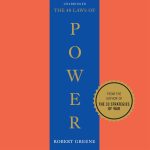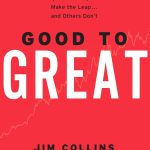
Customers say
Customers find the book helpful for improving their photography skills and taking better photos. They appreciate the good photos and new techniques to create interesting photographs. The book opens their creative spirit and provides ideas for capturing everyday moments. Readers describe the writing as clear and concise, with each chapter being short with ideas and tips for good photography. They also mention that the material is well-presented, solid, and time-tested. Overall, customers consider it a good value and a good gift.
Make It Yours – See Your Price On Amazon!
Your Sales Price $25.99 - $14.89
A quick rundown of this product’s key features:
Through accessible discussions and exercises, readers learn to use composition, available light, color, and point of view to create stunning photographs in any environment.
Photographers are born travelers. They’ll go any distance to capture the right light, beautiful landscapes, wildlife, and people. But exotic locales aren’t necessary for interesting photographs. Wonderful images are hiding almost everywhere; you just need to know how to find them.
Extraordinary Everyday Photography will help you search beyond the surface to find the unexpected wherever you are, be it a downtown street, a local park, or your own front lawn. Authors Brenda Tharp and Jed Manwaring encourage amateur photographers to slow down, open their eyes, and respond to what they see to create compelling images that aren’t overworked. Inspiring photo examples from the authors, taken with DSLRs, compact digital cameras, and even iPhones, show that it is the photographer’s eye and creative vision–not the gear–that make a great image.
Our Top Reviews
Reviewer: Jay H. Levin
Rating: 5.0 out of 5 stars
Title: A superb book that will enhance artistic skills
Review: This is is a superb book on creative photography written by two highly skilled and well-known professional photographers. Indeed, the reader who is familiar with Brenda Tharp’s outstanding book on “Creative Nature and Outdoor Photography” will find the present book in many respects to be a natural outgrowth of its predecessor. These two books complement each other perfectly, and the reader who wants to enhance his or her artistic skills would do well to become well acquainted with both. The great advantage of these books read in this way is that they serve as a terrific foundation for learning how to become a more creative photographer.Some reviewers of this book have written that there is nothing new here. I disagree. The book is packed with numerous ideas that most photographers would be unfamiliar with. Just to name only a few, there is a fascinating presentation about panning that includes panning on still scenes, a technique that produces beautiful abstracts (pp. 56-58). Second, Jed Manwaring presents his own original concept that he calls “Lightlines” that involves drawing on photographs with a fine point technical ink pen (p. 71). Finally, there is a section discussing the highly technical details involved in photographing the moon (p. 140), clearly not a simple point and shoot exercise. Furthermore, beyond these examples and many others, reading the authors’ slant on more familiar topics also produced numerous insights of which I was not previously aware. In summary, there is something new to be learned here in virtually every section of the book.Nevertheless, I have some reservations that I believe need to be mentioned. The authors state “We are willing to bet that you can make great photographs near where you live, no matter where that is.” (p. 9). Hence, the title of the book. However, certainly not all photographs in the book can be characterized as “everyday” images. For example, two photographs from Tuscany appear on pp. 97 and 127 with the location not identified. I was a participant in a workshop with the authors when these photographs were taken, and while I view them as extraordinary, I do not view them as “everyday” photographs even though they certainly illustrate concepts in the book.Second, I did not find the settings information next to each photograph helpful in most cases. Most of the time the authors do not state if a particular photograph was taken hand held or on a tripod. Frequently one could figure this out by just looking at the image, but this was not always the case. Knowing the aperture and/or shutter speed did not always help or was useful. If a second edition of this book is to be published in the future, is would be extremely helpful to know if a tripod was used for each image and why or why not. The settings information then would become much more useful. Readers of this book would certainly benefit in their skills from this information.Finally, the title of the book appears to have been chosen to appeal to all levels of amateur photographers. This is an excellent strategy from a marketing standpoint. However, I believe that many if not most beginners will be in for a steep learning curve. Many concepts will be new and will require considerable practice to be learned well, although the book does an excellent job of recommending exercises in the field for this purpose. Some concepts, however, are not defined at all (e.g. chromatic aberration, p. 64), and it is simply assumed that the reader will be familiar with them.Aside from these reservations, this is a terrific book that I believe will greatly benefit all photographers from beginners on up. I found it important to read this book twice before writing this review because there is so much in here. It is superbly written by two outstanding photographers. Take this book seriously along with Brenda Tharp’s predecessor book, and you will greatly advance your artistic skills.
Reviewer: John McQuitty
Rating: 5.0 out of 5 stars
Title: Superb Book – A “must” read!
Review: This superb book should be read by everyone who takes a picture for fun or profit. It is what photography should be all about – seeing the beauty around us and sharing it with others. Everyone who contemplates taking a picture should at least read the introduction. It is not about technique nor is it about “pixel peeping.” As the authors state – Anyone can take a “good” picture in the digital age. This is about seeing, feeling, thinking, and finally recording beauty wherever you are with whatever camera you have. The ilustrative photographs are fantastic, and obviously some excellent technique went into making them, but more important than f/ stops, shutter speed, ISO, and post processing, the authors demonstrate that what to take, and when to take it “makes” the photograph. This book is not for “snoods” (snooty and rude) folks that look down their noses at anything not taken with the latest bazillion megapixel, megadollar, DSLR and latest – and most expensive – of the lens makers art. In that sense, it is liberating.Actually, this book is about using your camera to create art, and using your eyes and imagination to see art possibilities all around you, and to have fun doing it. It is about freeing your “right (creative) brain.” “Techies” will find it too “touchy-feely,” not technically oriented. If you are only thinking f/ stops, ISOs, gadgets and gear, this book is not for you. Save your money. But, if you want to learn how to see artistic potential all around you, how to take beautiful pictures that others may overlook, and to feel the fun, excitement and liberation that creative self-expression generates in you, this book is where it’s at. Get it!The book is well written, excellently illustrated, and very readable. It is not for the angst-ridden and harried professional who is constantly under the gun to “get the picture” that someone else has specified, and never knowing if he/she is “good enough.” I guess there is a place for that, but it is what has always kept me from “turning pro.” This is about the “real stuff,” the creative stuff that fulfills and satisfies the soul.Buy it, get it, read it! Think about it. Then go out and see in new ways, and use all your skill to communicate your feelings through your photographs. That’s what it’s all about!This book and Ms Tharp’s previous book “Creative Nature and Outdoor Photography” (I have both editions) belong on everyone’s bookshelf. However, it won’t stay on your bookshelf long. You’ll be to busy reading, learning, rereading, and relearning, dogearing pages, and refering back over and over again. They are that good!
Reviewer: Nancy Lemon
Rating: 4.0 out of 5 stars
Title: Great book for beginners…..nothing new for experienced photographers.
Review: As an experienced photographer I’m always on the lookout for inspiration and/or suggestions to help refine my photographic eye and see photo opportunities in ways I might of missed before so I had high hopes for this book based on it’s title…….. while the book is packed with sound and practical advice I found it, for the most part, to be nothing I had not read or heard countless times before……..While not a how-to book, people new to digital photography in general will find the book peppered with excellent suggestions and explanations of how the photo process has evolved in the digital era as well as helpful hints and self assignment ideas at the end of every chapter….I especially like and agree with the fact that the authors suggest that one doesn’t have to travel to exotic locals to make stunning photos, excellent opportunities are just outside your door if one chooses to find them….. this is the premise of the book and I think that they succeeded admirably on that count.While I found many parts of this book to be redundant to me, I think that overall this book is an excellent choice for those who are looking to advance their skill at spotting and taking photos that go beyond a simple snapshot.
Reviewer: Michel F
Rating: 5.0 out of 5 stars
Title:
Review: This book focuses mainly on what makes a photograph beautiful and creative without delving in boring philosophical diatribe which is the plight of many photography books that focus mainly on artistry. It’s loaded with useful information and beautiful examples of how to take your pictures to the next level artistically speaking. I have read Creative Nature and Outdoor Photography from the same author and I think that one’s a must also. You can’t go wrong with any of Brenda Tharp’s books. I think it will help anyone decipher what makes a photograph really stand out amongst the multitude of snapshots we see everyday and how to make it happen with your own photography.
Reviewer: Rezensionsschreiber
Rating: 5.0 out of 5 stars
Title:
Review: Dieses Review bezieht sich auf die Taschenbuch Version.Hierbei handelt es sich um ein sehr schönes Buch zum Einstieg in Themenwie Komposition und Bildgestaltung.Es wird in einfacher Art und Weise auf diese Themen eingegangen und manwird durch viele “Exercises” dazu ermutigt, selbst rauszugehenund Fotos zu machen.Was dieses Buch von vielen anderen unterscheidet:Man wird bewusst dazu angeregt, in seiner näheren Umgebung schöne Fotos zu machen,ohne, dass man zunächst an irgendeinen schönen Platz dieser Erde fliegen muss.Für all diejenigen, denen die Kameraeinstellungen keine Probleme mehr bereiten(darauf wird hier nämlich nicht großartig eingegangen) und die einen Einblickin Komposition und Bildgestaltung suchen, oder, die einfach nur einenAnreiz brauchen um rauszugehen und Fotos zu machen sehr empfehlenswert.Wer Bedenken hat, dass das Buch in englischer Sprache verfasst ist:Es wird sehr simples Englisch ohne viele Fachbegriffe verwendet, mit passablemSchulenglisch sollte man hier keine Verständnisprobleme haben.
Reviewer: Prasenjit D.
Rating: 5.0 out of 5 stars
Title:
Review: Rea6 extraordinary book.
Reviewer: Boustrophedon
Rating: 4.0 out of 5 stars
Title:
Review: Si tratta di un testo utile per cogliere qualche spunto in più, ma avrei preferito un approccio più sistematico alla composizione.Ci sono libri migliori sull’argomento, come quelli di duChemin.
Reviewer: Z
Rating: 4.0 out of 5 stars
Title:
Review: Interesting take on day to day objects.
Price effective as of Mar 28, 2025 07:48:17 UTC
As an Amazon Associate Dealors may receive a commission for purchases made through these links.









